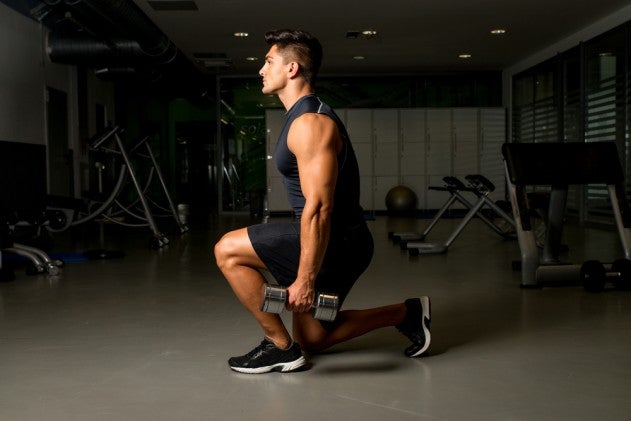What’s More Effective: Heavy Weights, Plyos Or Circuits?

Weightlifting might not be enough when it comes to non-running workouts. Photo: <a href=http://www.shutterstock.com>Shutterstock.com</a>
One study tries to answer the question that endurance athletes always ask.
There are various types of resistance training that runners do. Among them are heavy weightlifting, plyometrics and circuit strength training. Which one would improve your running more? Researchers from Finland’s University of Jyväskylä sought to answer that question a few years ago.
Twenty-eight recreational runners were recruited to participate in the study. All of them engaged in six weeks of preparatory strength training while continuing to follow their normal running schedules. When that was completed, the subjects were separated into three groups.
For eight weeks, while continuing to run, some of the subjects engaged in heavy weightlifting, others engaged in plyometrics training, and the rest did circuit strength workouts. Finally, for 14 more weeks the subjects continued to perform their designated form of resistance training at a reduced level while still running.
RELATED – One-Hour Workout: Functional Strength Work
During the intensive resistance training period, members of all three groups experienced gains in strength, muscle power, and velocity at VO2 max (an excellent indicator of running performance), while members of the plyometrics group also exhibited improved running economy. During the 14-week reduced resistance training period that followed, velocity at VO2 max increased further in the heavy weightlifting and plyometrics groups but not in the circuit training group. Running economy also improved in the heavy weightlifting group during this period.
The researchers concluded that heavy weightlifting or plyometrics performed concurrently with endurance training enhances running performance more than circuit strength training performed concurrently with endurance training. This study also shows that it’s a good idea to devote a period of several weeks to intensive resistance training to maximize gains in strength and power and then reduce resistance training to fully translate these gains into improved running performance.
The results were published in the International Journal of Sports Medicine.
****
About The Author:
Matt Fitzgerald is the author of numerous books, including Racing Weight: How To Get Lean For Peak Performance (VeloPress, 2012). He is also a Training Intelligence Specialist for PEAR Sports. To learn more about Matt visit www.mattfitzgerald.org.